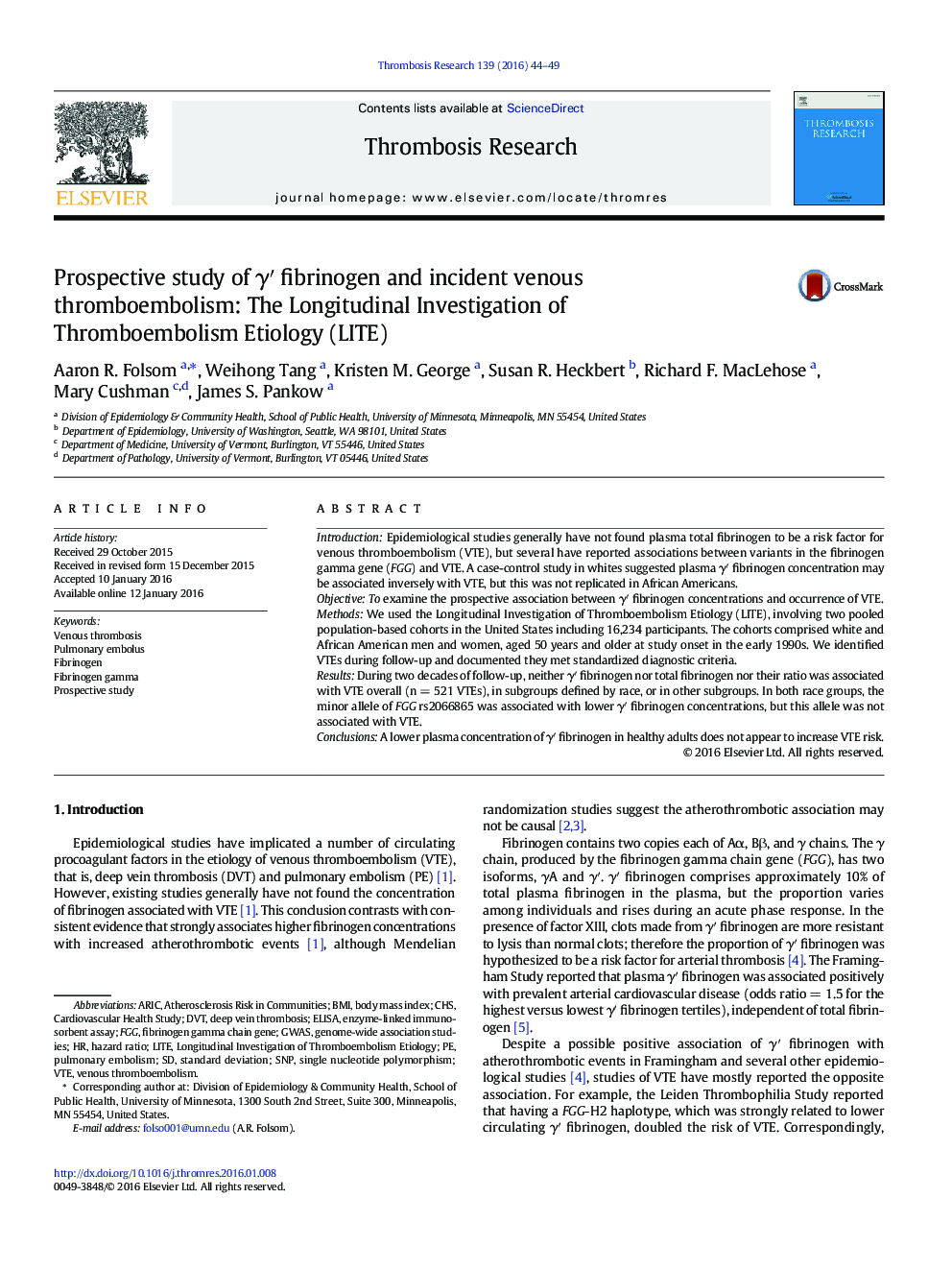| Article ID | Journal | Published Year | Pages | File Type |
|---|---|---|---|---|
| 3027031 | Thrombosis Research | 2016 | 6 Pages |
•γ′ fibrinogen comprises approximately 10% of total plasma fibrinogen.•γ′ fibrinogen concentration might affect venous thromboembolism (VTE).•We found γ′ fibrinogen not associated with VTE incidence.•A SNP associated with lower γ′ fibrinogen levels also was not associated with VTE.
IntroductionEpidemiological studies generally have not found plasma total fibrinogen to be a risk factor for venous thromboembolism (VTE), but several have reported associations between variants in the fibrinogen gamma gene (FGG) and VTE. A case-control study in whites suggested plasma γ′ fibrinogen concentration may be associated inversely with VTE, but this was not replicated in African Americans.ObjectiveTo examine the prospective association between γ′ fibrinogen concentrations and occurrence of VTE.MethodsWe used the Longitudinal Investigation of Thromboembolism Etiology (LITE), involving two pooled population-based cohorts in the United States including 16,234 participants. The cohorts comprised white and African American men and women, aged 50 years and older at study onset in the early 1990s. We identified VTEs during follow-up and documented they met standardized diagnostic criteria.ResultsDuring two decades of follow-up, neither γ′ fibrinogen nor total fibrinogen nor their ratio was associated with VTE overall (n = 521 VTEs), in subgroups defined by race, or in other subgroups. In both race groups, the minor allele of FGG rs2066865 was associated with lower γ′ fibrinogen concentrations, but this allele was not associated with VTE.ConclusionsA lower plasma concentration of γ′ fibrinogen in healthy adults does not appear to increase VTE risk.
